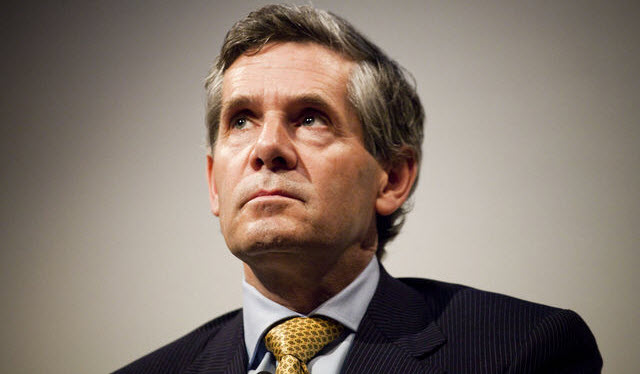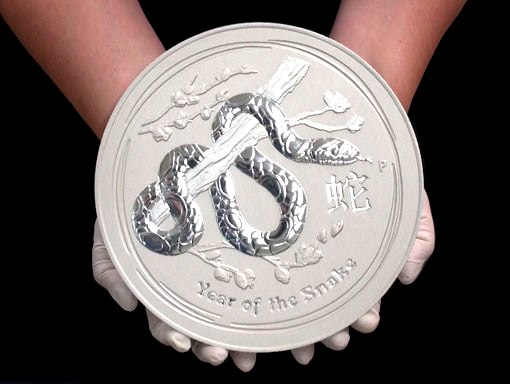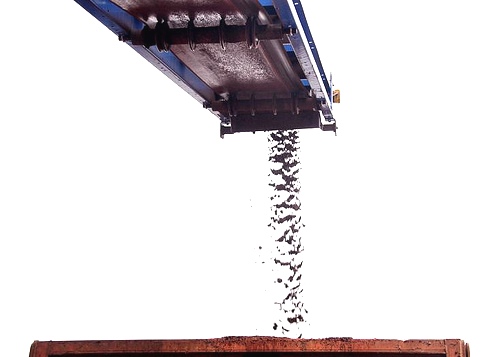NEWS RELEASE.
February 27, 2013: Vancouver, B.C. – Golden Arrow Resources Corp. (Stock Profile – TSXV:GRG) announces the following executive appointments effective Feb. 26, 2013: Carlos H. Fernandez Mazzi as president and chief executive officer; Joseph Grosso as executive chairman; and Michael Iannacone as chief financial officer and corporate secretary.
Mr. Grosso stated: “I am extremely pleased to have Carlos take a leading role in Golden Arrow at such an exciting time in the company’s history. His experience and track record of successfully taking major projects forward is the skill set that is required to rapidly build Golden Arrow. As executive chairman, I feel confident that Golden Arrow has a formidable team in Carlos, Mike Iannacone as CFO and Brian McEwen as VP exploration to advance our company to the next level. I look forward to working closely with Carlos and the rest of the team and seeing our Company grow significantly.”
Mr. Fernandez Mazzi commented: “I feel privileged to join Golden Arrow and to have the opportunity to capitalize on Joseph’s mining leadership in Argentina since 1993. Golden Arrow is in an unparalleled position for delivering increased value to its shareholders based on a solid balance sheet, a diversified portfolio of properties and a proven results-oriented team. I look forward to working with the board, staff and key stakeholders in unlocking the value of the company’s extensive property portfolio. In particular, I am excited to contribute expertise gained in the Bolivian silver belt area to advance the promising Chinchillas silver project.”
Carlos H. Fernandez Mazzi — president and chief executive officer.
Mr. Fernandez Mazzi’s career spans over 30 years in international business and investment banking highlighted by his leadership as chief executive officer of the Bolivian subsidiary of APEX Silver Mines where Mr. Fernandez Mazzi led the strategy, financing and development of the San Cristobal project in Bolivia. With over $1.0-billion of investment, this 40,000-tonne-per-day project represented the largest mining investment in the country with substantial contributions to regional infrastructure, mining capacity and job creation. Under his leadership, the San Cristobal project gained recognition as a model for impact investing and sustainable solutions to human development through social entrepreneurship initiatives.
Joseph Grosso — executive chairman
Mr. Grosso has been appointed as executive chairman of the company. He will work very closely with Mr. Fernandez to ensure a fluid transition. Mr. Grosso became one of the early pioneers of the mining sector in Argentina in 1993 when mining was opened to foreign investment, and was named Argentina’s Mining Man of the Year in 2005. His knowledge of Argentina was instrumental in attracting a premier team which led to the acquisition of key properties in Golden Arrow’s portfolio. He has successfully formed agreements and negotiated with mining industry majors such as Barrick, Teck, Newmont , Viceroy (now Yamana Gold) and Vale SA, and government officials at all levels.
Michael Iannacone — chief financial officer and corporate secretary
Mr. Iannacone has been appointed chief financial officer and corporate secretary replacing Bassam Moubarak who will remain with the company as a consultant to assist with the transition of the chief financial officer and corporate secretary roles.
To learn more about the appointments – CLICK HERE.
CompanyFeed™

U.S. Dollar prices for gold rose briefly above $1600 per ounce Tuesday morning before falling back, while silver failed to hold above $29 an ounce and stock markets fell following the inconclusive Italian election result.
Italian markets were especially affected, with stocks and government bonds seeing sell-offs, while on the currency markets the Euro hovered near seven-week lows against the Dollar following yesterday’s 2% drop.
“Risk sentiment turned negative [this morning] on the inconclusive Italian election and fears of sustained instability for the country and Eurozone as a whole,” says a note from Credit Agricole. “The outcome of the Italian elections is likely to spark increased demand for gold,” adds a note from Commerzbank, “as it could force the sovereign debt crisis back into the foreground.”
Gold exchange traded funds tracked by news agency Bloomberg meantime saw their holdings fall to a five-month low of 2536.3 tonnes yesterday.
Italy’s general election failed to produce a clear winner, with the bloc led by Pierluigi Bersani’s Democratic Party winning the lower house of parliament but failing to win the Italian Senate.
The biggest share of the lower house vote to go to a single party went to the Five Star Movement, a protest movement led by comedian Beppe Grillo, which polled 25.55%. Grillo and Five Star have campaigned against the austerity measures brought in by outgoing technocrat prime minister Mario Monti, whose party only polled around 10% of the vote for each house of parliament.
Bersani’s bloc will have more seats than Five Star, however, as will the bloc led by former prime minister Silvio Berlusconi’s party. Berlusconi is expected to win the region of Lombardy, according to Italian television, which adds that this should give him control over the upper house.
“The political situation across Europe is effectively a race between austerity and reforms on the one hand and the rise of populist movements on the other,” says Alberto Gallo, head of European macro credit research at Royal Bank of Scotland. “Austerity is painful, and if reforms are not implemented in time, you run the risk of social unrest and populism. It hasn’t happened so far in Greece, it hasn’t happened in Portugal or Spain, but we are very close in Italy.”
The FTSE MIB, Italy’s main stock market, fell 5% from yesterday’s close in Tuesday’s early trading, while investors also sold Italian government bonds, pushing 10-Year yields to a three month high above 4.9%.
“It’s clear that from a foreign investor point of view they’re very concerned about political instability and forming a government that can push through pro-growth policies in Italy and in Europe,” one Milan-based fund manager told newswire Reuters this morning.
The Bank of Montreal (BMO) launched initial coverage on Cardero Resource Corp. (Stock Profile – TSX:CDU & NYSE-MKT:CDY), a Vancouver based small-cap mine development company focused on the Carbon Creek metallurgical coal deposit in N.E. British Columbia. Cardero owns a 100% working ownership in the asset. Cardero is rated Outperform based on valuation, near-term production and lower capital requirements.
BMO’s estimated NPV (10% discount rate) of $686 million is 47.5% higher than the NPV stated in Cardero’s prefeasibility study. The target price of $0.45 per share assumes that Cardero will finance $237.5 million (50% of the project’s CAPEX) via an equity component at the current share price levels (est. $0.35). The other 50% is expected to be financed through debt. However, Cardero is pursuing multiple avenues for production financing that may not involve such substantial dilution.
According to BMO, the bankable feasibility study for Carbon Creek is underway. Capital costs of $475M or approximately $116/annual ton are near the bottom of comparable projects and when operational the Carbon Creek mine is expected to produce approximately 4.1Mtpa of metallurgical coal at full capacity. Initial coal production is anticipated by year-end 2014 or early 2015.
BMO’s research implies a C$0.80/share NPV (assuming 857.5 million shares o/s compared to 110 million currently issued) and is based on long-run pricing of US$175/mt FOB met coal. The bank’s $0.45 target price implies 0.6 x P/NPV, well below mid-cycle multiples of 0.9 x for producing coal companies.
Cardero trades the lowest of the coal group on P/NPV (both BMO’s base case and spot) and EV/t of reserves, and among the lowest on implied pricing.
To learn more about Cardero Resource Corp. – CLICK HERE.
NEWS RELEASE.
February 25, 2013: Montreal, Quebec – Stornoway Diamond Corporation (Stock Profile – TSX:SWY) has completed diamond recovery from the Renard 65 bulk sample recently collected at Stornoway’s 100-per-cent-owned Renard diamond project located in north-central Quebec. In total, 962.8 carats of diamonds larger than a +1 DTC size sieve were recovered from 5080.8 dry tonnes. The size of the diamond sample recovered and the incidence of large diamonds are consistent with Stornoway’s expectations for the Renard 65 kimberlite at this sample location.
The objective of the Renard 65 bulk sample was the collection of approximately 1,000 carats of Renard 65 diamonds for valuation purposes. Having achieved this objective, a diamond valuation exercise has been scheduled to take place shortly in Antwerp, Belgium.
As previously announced (Stornoway press release dated December 11th 2012) the largest diamond recovered from the sample was a 9.78 carat white octahedral gem with a preliminary valuation of $7,000 per carat. The next largest diamond was a 6.41 carat white gem also of high quality, with a preliminary valuation of $4,700 per carat.
To learn more about Stornoway’s Renard project – CLICK HERE.
CompanyFeed™

I had the opportunity yesterday to speak with legendary founder and former CEO of GoldCorp, Rob McEwen. He is now the CEO, Chairman, and largest shareholder of McEwen Mining (Stock Profile – TSX:MUX & NYSE:MUX).
It was a powerful conversation, as Mr. McEwen spoke to why so many miners are failing to deliver returns to shareholders, the “illusory” strength of the post-presidential election economy, and his thoughts on gold and silver going forward.
When asked about the languishing share prices of miners over the last few years, Mr. McEwen said, “What you’re seeing in the market today, particularly amongst the large gold producers…is they were doing big deals to make big news, to pay themselves large salaries, and the shareholders have suffered as a result…Six years ago a large number of people in the industry said, ‘You have to be bigger to be relevant in the market. We want to have more reserve life, more production’, but they did it without regard for shareholdings.”
He further added that, “[There’s] a point I try to drive home to investors…when someone is pitching you on a story and they say the outlook is great, their company is fantastic, you [need to] say, ‘Okay, I buy all that. [But] how much do you have invested in the company?…Are you taking a low salary?’…In the last six years you saw large salaries, large options, and small [CEO] investment…It contributes to [under performance], because you’re not thinking every day about your exposure in your own stock. That’s why in McEwen Mining I own 25% of the stock, and I don’t take a salary. I wanted to be in the position where I make money the same way that my shareholders do.”
When asked if and when the tides will reverse for mining shares, Mr. McEwen said, “I think you’re going to see a swing back into the [mining] equities this year. It’ll probably be kicked off first by a discovery or two, and then some people are going to look at the seniors and go, ‘Now wait a minute, they’re yielding 3% on a dividend, a lot of them have changed their CEO’s, the new CEO is going to be more cautious…and they’ll work on trying to improve their operating margins’…So you should have some strengthening in the seniors, and when they strengthen, the intermediates and the juniors will follow.”
With respect to owning and buying gold here at these levels, Mr. McEwen said, “Everybody got distracted by the US presidential election when they were telling everybody that the economy is getting better—and why wouldn’t it when you push in a couple trillion dollars?…The case for owning gold hasn’t changed. Governments around the world are still printing lots of money, still borrowing a lot, and the reasons gold ran up before [in price] are still there and greater today…Interest rates are so low the only place you can go is in the market right now. It’s [all] very illusionary, and we’ll find people returning to gold…[So] now is a great time to be buying it.”
In regards to whether or not his company will begin to withhold silver bullion from the market in the future, Mr. McEwen said, “It depends on how much you’re making and you’re ability to hold back…When I was running Goldcorp in 2001, we started withholding some of our production. We started off withholding 10% of our production…We [then] increased our holdings to be holding back 30% of our production. At one time we had more gold in our vaults, than 50 of the 114 Central Banks that held gold. If you believe that the price is going higher—then why wouldn’t you hold some of your gold and silver for a future date?“
With a concluding remark on price expectations for the metals, Mr. McEwen said, “When gold reaches $5,000 an oz., I would expect to see silver at $200 an ounce.”

It’s time for our annual Stocks to Watch list. 2013 is well underway and we’ve seen some very interesting developments in the mining markets.
Despite the obvious issues facing the global economy, there is a subtle optimism brewing that perhaps the worst is behind us. To some degree, watching the DJIA hit new 52 week highs since mid-January has helped restore investor confidence in the markets.
So what should investors be looking at in 2013?
Uranium stocks have rebounded sharply from 2012 lows and continue to move higher under the speculation that Japan will restart their nuclear power program at some point this year. This speculation has not had much of an impact on the price of uranium – yellowcake has rebounded only slightly and sits at $43.35 per pound. Prices of global thermal coal, another provider of energy, have also bucked a downward trend in 2012.
Base metal and tech metal stocks have seemingly turned the corner after the dog days of December. News that the U.S. economy is recovering and China’s economy is in the process of a “soft landing” has spurred gains. Coking coal looks to be in recovery mode as well in early 2013. Mitsubishi Chief Financial Officer Ryoichi Ueda recently stated, “It appears the prices (for coking coal) have bottomed out.”
Potash, phosphate and other mined plant nutrients have not recovered and are currently slipping lower. Mining stocks focused on delivering plant nutrients to our world’s farmers, however, are up 20% in 2013 according to the MiningFeeds Potash Stock Index. The MiningFeeds Diamond Index is on the rise this year as well – our basket of diamond stocks is up nearly 13%.
The only group that has underperformed so far in 2013 is precious metals: gold and silver. We took a look at gold and gold stocks in late January and identified a number of factors that were working against gold in the article, “What’s Going on With Gold and Gold Stocks?“.
The decline in silver and silver stocks has been less pronounced. According to Martin Arnold, research director at ETF Securities, “Silver is a hybrid metal and is likely to receive strong support in 2013, as industrial demand rebounds at the same time as we are seeing strong investor appetite for precious metals to hedge economic uncertainty.”
Note: for recent commodity prices and data visit Index Mundi – an essential research site for any mining investor.
To kick off our first Stocks to Watch article in 2013 (Year of the Snake – Happy Chinese New Year) we look at three mining stocks you may want to keep an eye on. In alphabetical order we first take a look at Golden Arrow Resources.
1. Golden Arrow Resources Corporation (Stock Profile – TSXV:GRG)
If you have never heard of Golden Arrow Resources I’m not surprised; neither had I until meeting with Paul Guedes, the company’s Director of Corporate Communications, at the AME BC Minerals Exploration Roundup Conference a few weeks ago. After speaking with Paul for 20 minutes I concluded that 2013 could be a breakout year for the company.
Golden Arrow, part of the Grosso Group of companies, has been operating in Argentina for over 20 years and to its credit has made some impressive discoveries. Most notably, the Gualcamayo gold mine – now owned by Yamana Gold (Stock Profile – TSX:YRI & NYSE:AUY) – containing 2.2 million ounces of gold (proven & probable) and another 1.1 million ounces (measured & indicated).
Until November, 2012 Golden Arrow held a 1% NSR royalty on the Gualcamayo gold mine and benefited directly from the production of the mine. The company decided to sell the royalty to Premier Royalty (Stock Profile – TSX:NSR) for cash consideration of $16.5 million and warrants to purchase one million shares valued at $1.25 million. The transaction boosted Golden Arrow’s cash position to $18 million and that cash, in part, funded a 6,500 meter drill program on the company’s flagship project – Chinchillas – along with a share buyback program.
The Chinchillas project is located in the prolific Bolivian silver-zinc-tin belt which extends into northern Argentina. On July 10th, 2012 the company announced drill results from Chinchillas reporting 29 meters of 631 grams per tonne silver including 6 meters of 1,873 grams per tonne of the shiny white metal. Two other holes were also announced containing 591 and 515 grams per tonne silver over 22 and 29 meters respectively.
Golden Arrow expects to release a maiden resource calculation by the end of April, 2013. The resource calculation is based on two seasons of drill results and will define ounces in the ground – a major project milestone.
In addition to Chinchillas, the company holds 30 other properties in Argentina including the Mogote copper-gold project that is under option to Vale (Stock Profile – NYSE:VALE). The Brazilian mining giant can earn an initial 70% interest in the project by completing US$6.8 million in exploration expenditures and making US$2.3 million in cash payments to Golden Arrow over 3 years. Work is ongoing at the Mogote project and the company plans to develop more of its assets as a project generator.
With just under 42 million shares issued, $12.5 million in the bank (est. at publication) and no debt the company is in strong financial shape in relation to most junior miners. The company’s shares are currently trading at $0.24 for a valuation of $10 million – a compelling reason why Golden Arrow is on our coveted 2013 Stocks to Watch list and is MiningFeeds newest client.
For 3 Mining Stocks to Watch in 2013 – Part 2 – CLICK HERE.

2. Hudbay Minerals, Inc. (Stock Profile – TSX:HBM & NYSE:HBM)
Hudbay Minerals is a Canadian integrated mining company with operations, development projects and exploration activities across the Americas. The company is principally focused on base and precious metals – primarily copper, zinc and gold.
The company has a number of projects in development but none bigger than the Constancia copper-molybdenum-silver mine located in Peru. Hudbay acquired the asset from Norsemont Mining in 2011 in a transaction valued at $520 million.
In August 2012, Hudbay’s board of directors approved a US$1.5 billion investment to fund the development and construction of the Constancia mine. The Constancia development schedule contemplates nine quarters of construction, with initial production in late 2014 and full production commencing in the second quarter of 2015.
With $1.5 billion in cash and cash equivalents offset against $500 million in long term debt, Hudbay has approximately $1 billion in available working capital; and, the company plans to put that money to work developing its various projects. In addition, management is also looking outside the company for growth opportunities.
“We’re looking at a lot of things and I’m hoping that we can tuck something in this year,” said Chief Executive Officer David Garofalo during an interview with Bloomberg in early February. “We’ve never been busier looking at opportunities.” Hudbay’s CEO looks to take advantage of a “buyers market” as small companies struggle to raise funds and larger competitors consider sales.
Garofalo notes the Norsemont acquisition was “just under 20 percent of our market cap and that’s a level that I’m pretty comfortable with, give or take. We prefer to focus on smaller deals, we don’t want to bet the farm on any one acquisition.” An acquisition would likely be facilitated by issuing stock or a combination of equity and cash.
Last week, HudBay stock had its “outperform” rating reiterated by analysts at RBC Capital in a research note issued on February 11, 2013. They currently have a $13.00 price target on Hudbay’s shares.
A number of other firms have also recently commented on Hudbay. Analysts at Canaccord Genuity raised their price target on HudBay Minerals from $10.50 to $11.50 in a note to clients on Thursday, January 10, 2013. On the same day, analysts at TD Securities raised their price target on shares of HudBay Minerals from $10.50 to $12.00.
Hudbay Minerals is currently trading at $10.64 per share which values the company at $1.8 billion and yields a cash to market cap ratio of 55%. It’s a “buyers market” and perhaps time for the company to leverage its healthy balance sheet.
3. Trevali Mining Corporation (Stock Profile – TSX:TV & OTCPK:TREVF)
One company that Hudbay might consider looking at is Trevail Mining. With development projects in Peru and Canada that are nearing production, Trevali is set to become the next TSX-listed zinc producer.
In Peru, the company is close to production at its Santander zinc-lead-silver mine where commissioning is scheduled to commence in a few weeks.
In Canada, Trevali owns the Caribou mine and mill, the Halfmile mine and the Stratmat polymetallic deposit – all located in the Bathurst Mining Camp of northern New Brunswick. Trial production from the Halfmile mine was successfully undertaken in 2012 and the Company anticipates commencing operations at its Caribou Mill Complex in late 2013.
Trevali is not only on our radar but is also on the radar of Aleksandra Bukacheva, a mining research analyst with Fraser Mackenzie in Toronto. When asked which of the companies she covers are possible takeover candidates, Ms. Bukacheva said, “The first and perhaps most likely would be Trevali Mining. It is the only emerging junior zinc producer listed on the Toronto Stock Exchange. History shows that every single junior zinc company that’s made it into production, like Farallon Mining and Breakwater Resources, has been taken out within a few years of operation.”
Bukacheva adds, “We as a firm are bullish on zinc. We believe that there is likely to be a zinc supply shortage in the next three years, which could be a tailwind for the price of zinc.”
Trevali Mining is part of the Cardero Group of companies. Based in Vancouver, the Cardero Group has been on the sell side of a few takeovers including the sale of Corriente Resources to CRCC-Tongguan Investment Co. for $680 million in 2010 and the Pampa de Pongo iron project in Peru, which sold for $100 million to the Nanjinzhao Group in 2009.
Shares of Trevali Mining are currently trading at $1 even valuing the company at $200 million – a valuation which may garner some attention from larger companies looking to expand their base metals portfolio.
For 3 Mining Stocks to Watch in 2013 – Part 1 – CLICK HERE.

Iron ore is the key ingredient used to make steel. The majority of the seaborne trade, that is, iron to be shipped to other countries, goes to China.
An oligopoly exists today whereby China is forced to rely on Big 3 producers Vale, Rio Tinto and BHP Billiton for over 60% of its imports at arguably inflated costs.
This is primarily because domestic Chinese production is very high cost and very low grade. Given 7 of the world’s top 11 steel producers are Chinese, it is rational to assume China’s appetite for foreign sources of iron ore will remain strong for the foreseeable future. We published an article on February 1, 2013, titled “Wuhan Iron to buy more overseas mining assets” because we felt that this was a strong signal that Canadian iron ore resources will be on investors’ and steelmakers’ radar over the next few years.
In the article, Government owned Wuhan Iron and Steel (Group) Corp, China’s fourth-largest steelmaker by output, said it plans to achieve 100% self-sufficiency in three to five years and abandon its heavy reliance on the Big 3 by investing directly in iron ore resources in Canada and Brazil.
Chinese steelmakers have been looking to Canada, and in particular the Labrador Trough, as a source for high quality long term supply of iron ore in a safe jurisdiction. Steel companies typically invest in smaller owners of iron ore resources, and enter into an offtake agreement to purchase a portion of their mine production. Wuhan and China’s largest steelmaker, Hebei Steel, have already made investments in projects in the Labrador Trough.
I decided to take a closer look at some of the iron companies in Canada. Most are large and well established and therefore out of our junior filter. Of the juniors, one stood out because of its large valuation gap.
Iron ore deposits in Ungava Bay, Quebec
The Hopes Advance project in Ungava Bay, Northern Quebec is a large, high-quality iron ore deposit on the northern end of the Labrador Trough which, at full capacity, will be the largest operating iron ore mine in North America. It also has potential to become one of the world’s lowest operating-cost iron ore producers.
Hopes Advance’s competitive advantage is its location on the coast. Product will be transported directly from the processing plant onto a ship using a concentrate pipeline with no need for any rail reducing the average life-of-mine operating costs to an estimated $30.18 / tonne, which is firmly in the lowest quartile of operating costs for iron ore producers globally.
Oceanic Iron Ore (Stock Profile – TSXV:FEO & OTCPK:FEOVF) is the company that owns the Hopes Advance project and it currently has a ~$35 million market cap, which indicates that investors aren’t paying much attention to FEO’s $5.63 billion pre-tax NPV. The next critical step for Oceanic is securing the right strategic partner to assist with the $2.85 billion capital build to put the project into production. No easy feat in this market.
I had an opportunity to meet with the Oceanic senior-management team and get some of their perspectives on the project. We spoke with Steven Dean, Chairman and CEO, and Alan Gorman, President and COO. Our conversation focused on the reasons why Oceanic should be able to attract a strategic partner.
The partner that Dean and his management team are looking for will likely be a Chinese or other global steel company looking to secure a long term high quality iron ore supply with scale at a low operating cost in order to help to satisfy long term supply requirements and provide leverage in negotiations with the Big 3.
Oceanic believes its Hopes Advance project is very competitive in today’s iron ore market. “Those [projects] that have low operating costs and high-quality large-scale reserves always stand head and shoulders above the peer group, not only domestically, but globally, and that’s what we have,” Gorman told us.
“The team understands that the project needs a partner to keep advancing,” Dean told us, “Clearly, the next catalyst for value will be when we secure our strategic partner because with that partner comes the capacity to finance and therefore make the NPV of $5.6B that much closer to reality.”
Oceanic’s Pre-Feasbility Study was released in October 2012 and, since then, the management team has been evaluating the iron and steel space for potential partners. Dean and Gorman tell us that there are 30-50 companies capable of partnering with a project like this, and the company is engaged in discussions with 10-12 parties currently.
With the announcement last week that CN is delaying, and may walk away from, the rail feasibility study that would serve the transportation needs of many other development stage iron ore projects in Canada, Oceanic’s “no rail advantage” and control over its own infrastructure and schedule, certainly look more compelling today than before.
Dean is the former President of Teck Cominco (now Teck Resources), and was a member of the founding management team of Normandy Mining, helping to build both multi-billion dollar resources companies. Gorman has over 30 years’ experience developing projects in the North, including Jien Canada Mining’s Nunavik Nickel project and Canada’s most famous iron ore venture, Baffinland’s Mary River project.
One of the largest shareholders is resource mogul Frank Giustra. “My average cost in FEO is higher than where the shares trade today and I am with the company for the long term,” said Giustra.
U.S Global Investors is another noteworthy shareholder. Chief Executive Frank Holmes commented, “We look for strong proven leadership and Steven Dean is in the top 1% of his peers. We also look for the optionality of a large iron ore resource which Oceanic demonstrates in a mining friendly community. This is why we are large investors.”
When I made the decision to invest in an iron project, we chose Oceanic for three reasons: value gap, projected lowest quartile operating costs globally, and management. Recent insider buying gives us the confidence that this was a worthwhile decision.
Disclosure: At publication date MiningFeeds Contributing Editor Tommy Humphreys owns shares in Oceanic Iron Ore and Oceanic Iron Ore paid for the production of the video content embedded in this article.

Gold prices extended losses on Friday to hit a six-month low and breached key chart support levels at $1,625, its previous low for the year, triggering a technically-driven sell-off.
Gold stocks and ETFs are also down sharply today.
“Prospects for better global growth,” says the latest Metals Matters Monthly from bullion-bank Scotia Mocatta, “have increased the opportunity cost of holding gold.”
Adding fuel to the fire, yesterday data showed billionaire investor George Soros cut his holdings in the SPDR Gold Trust, the world’s largest gold exchange-traded fund, by more than half in the fourth quarter of 2012. This news helped facilitate gold’s decline.
“The 1,625 level was a big support and once that was broken, stop-selling orders kicked off and now we are in a new range of $1,550 to $1,625,” said Adrien Biondi, head of precious metals trading at Commerzbank.
Sell stops are automatic technical selling signals that start after prices break through key support levels which allow traders to limit losses in a falling market.
“With prices coming lower, all the physical buyers will start covering some of the shorts and maybe some investors will come around as well,” postulates Commerzbank’s Biondi.
The physical market was quiet in Asia but some expect Chinese players may take advantage of the lower prices to replenish stocks when they return from their week-long public holiday for the Lunar New Year celebrations on Monday.
On a positive note, this week the World Gold Council reported that in 2012 central bank purchases accounted for 12% of total demand, equal to nearly 1 ounce in every 8 sold worldwide. Confirming the world’s central banks are very much net buyers of gold.
However, GFMS metals consultancy’s Paul Walker states, “This market is going to stand and fall at what individual investors decide to do. Don’t put much weight on what the central banks are up to.” Walker adds, “This is all about the search for yield. The glue holding this together is negative real interest rates.”
NEWS RELEASE.
February 15, 2013: Montreal, Quebec – Stornoway Diamond Corporation (Stock Profile – TSX:SWY) reports that the Québec Ministère des Transports (“MTQ”) has successfully completed the construction of a winter road to the Renard Diamond Project site, two weeks ahead of schedule. The winter road is expected to be open for approximately 6 weeks, and will be used by Stornoway to mobilize heavy equipment required for the construction of the all-season Renard Mine Road. With today’s news, the Renard project has become accessible for vehicles for the first time since its discovery in 2001.
The MTQ winter road has been constructed under a Framework Agreement executed on November 15th 2012 by Stornoway, the MTQ, the Québec Ministère des Ressources Naturelles, and the Québec Ministère des Finances et de l’Économie (“MFE”). Under the terms of this agreement, a 240km long all-season road linking Renard to the Québec highway network is currently being constructed in four segments, A to D.
Progress is well established on segments A and B, which are being completed by the MTQ as a 70km/hr two-lane gravel highway. Stornoway will complete the remaining 97km covered by segments C and D as a 50km/hr single lane mining road under the terms of a Financing Agreement executed on December 6th 2012 between Stornoway and the MFE. The timely arrival of the MTQ winter road will allow Stornoway to commence construction of the Renard Mine Road in April, as previously planned. First all-season road access to Renard is scheduled for the 4th quarter of this year.
To learn more about Stornoway’s Renard project – CLICK HERE.
CompanyFeed™

Stan Bharti is a professional mining engineer, business consultant, international financier, and entrepreneur. In 2002, Mr. Bharti founded Forbes & Manhattan, a private merchant banking organization with a focus on the natural resources sector. Today, Forbes & Manhattan has investment interests in a large diversified portfolio of mining companies with operations around the world.
Forbes & Manhattan’s most successful project thus far has been Consolidated Thompson Iron Mines. The company was founded in 2005 as a grassroots exploration iron ore company with assets in Quebec. Over a five year period the company raised approximately $1 billion in development capital and completed a number of major milestones. The project was sold to Cliffs Natural Resources (Stock Profile – NYSE:CLF) in May 2011 for $4.9 billion.
Another successful project was Desert Sun Mining. In 2002, Bharti acquired a controlling position in Desert Sun Mining. He developed the Jacobina Mine to near production and then four years later sold the company to Yamana Gold (Stock Profile – TSX:YRI & NYSE AUY) for $735 million.
Forbes & Manhattan’s most recent exit was the sale of Avion Gold to Endeavour Mining (Stock Profile – TSX:EDV & OTC:EDVMF). Avion’s gold assets in Mali were originally acquired by Forbes & Manhattan in 2008 from Nevsun Resources (Stock Profile – TSX:NSU & NYSE MKT:NSU) for US$20 million. Endeavour Mining purchased Avion Gold on October 18, 2012 for US$389 million.
With successful exits under his belt, a new Canada-wide corporate strategy, and a portfolio of emerging mining companies in his stable, we are pleased to connect with Stan Bharti in our most recent installment of Top Mining Minds.
1. What factors will drive the mining markets over the next 12 months?
The mining sector is in a long term bull cycle at the moment. And, in general, we are in a positive trend for commodities.
Now, stocks sometimes get influenced by local changes with countries etc., so my thought is for the next 3 to 6 months – while the U.S. financial crisis unfolds and the American economy is still weak – the sector will continue to struggle. However, by the second half of the year it should become very very bullish for resource stocks. Primarily for junior stocks.
2. What should investors be doing right now?
The best thing for investors to do right now, in my mind, is to selectively look at good junior stocks. The main thing to consider is to avoid early exploration deals – buy companies with good assets near or close to production. That’s the key.
Right now a lot of investment funds are getting hit with redemptions. But when the markets come back and the world gets comfortable with resources again, which will happen shortly, the first companies people will want to buy are the majors. With time investors will slowly move down the food chain and you’ll see demand increasing for the juniors. The first ones to move will be the companies that are close to production or near production.
3. What are your top picks (can be a commodity sector, stock or both) and why?
The sectors which I am most bullish on are energy, potash, coking coal and iron ore. Oil is at almost $100 a barrel and I think agriculture – potash and nutrients – will do very well. I also like coking coal and iron ore. If you look at the demand for steel it is going up substantially and China is launching a big program to build again. So steel requires iron ore and coking and we have already seen the price of iron ore go up 50% this year in 2013.
Precious metals, gold and silver of course, should also do well. Within Forbes, for example, we have two very good gold stories: Belo Sun Mining and Sulliden Gold.
Belo Sun Mining (Stock Profile – TSX:BSX) is a mineral exploration company with a portfolio of properties focused on gold in Brazil. Belo Sun’s prime focus is on advancing and expanding its 100% owned Volta Grande Project, located in Para State and it already has a resource that is measured and indicated.
Sulliden Gold (Stock Profile – TSX:SUE & OTC:SDDDF) is close to production. Sulliden is focused on developing the Shahuindo Gold Project, its 100%-owned flagship property located in a prolific gold producing district in northern Peru.
Both companies operate in stable countries and given the many geopolitical risks around the world this is an important factor.
To read more from our Top Mining Minds series – CLICK HERE.

In one of the more fascinating conversations I’ve had over the last year, I was able to connect with exploration geologist, Dr. Peter Megaw. Dr. Megaw is an expert on Mexican gold and silver exploration, and has authored a number of scientific pieces on ore deposits. He is also a director of silver exploration company, Mag Silver. (Stock Profile – TSX:MAG & NYSE MKT:MVG).
Over the last 30 years, Dr. Megaw and his team have acquired some of Mexico’s most highly prized and elephant-sized silver deposits. These deposits are so large and of such high grade, they will “make money at $10 an oz. silver” and survive “under almost any market conditions“, explained Dr. Megaw.
He further shared the riveting story of how he and his team were able to acquire over 250 million oz.’s of silver in the ground for the cost of filing fees.
Here are my notes from the conversation:
TD: Dr. Megaw, what did you see years ago that others didn’t in terms of getting your hands on such large deposits of silver in Mexico?
DPM: Well, after the Bre-X scandal (1997) until 2003, there was simply no demand for exploration properties. The exploration business was completely in the tank and the period was referred to as “nuclear winter”. The upside during that time, was that lots of very high quality properties were dropped and available for acquisition at very low costs. We had identified the potential of some of these properties and simply acquired them when nobody else wanted them—in most cases for the cost of filings fees.
Many of us have enough years in the business to realize that these things are cyclical, and there’s no better time to acquire inventory then when no one wants it.
TD: What deposit characteristics have served as “must have’s” for you and your team?
DPM: Our long-term focus has been searching out size and grade. Everything we’ve ever done as ‘explorationists’ has focused on finding deposits that are of high enough grade to make it under almost any market conditions, and large enough to be district-scale plays. We’ve never been interested in looking for the next “ore-body” or the next “small mine”. We’ve always focused on the big plays. A big play you believe in is something fairly easy to latch onto conceptually, as well as to hang on to during tough markets.
TD: How would you characterize today’s exploration market? Is great value finally flushing itself out?
DPM: I would call this time a Darwinian or Malthusian reckoning. Over the last 5 years, our industry has been inflated by literally hundreds of companies that have gone into various aspects of exploration that either don’t make sense or they simply don’t have the people. You walk into the big room at the PDAC, and there are 850+ companies in that room, representing virtually every element on the periodic table. There are five companies chasing each element, with every one of them trying to get investors’ attention.
Most of them don’t have quality properties, and a very high percentage don’t have the people with the technical training needed. Over the last 30 years, there’s been a huge downsizing in our industry, and one professional after another has been flushed out through one down cycle after another. The number of people left standing after that is small. And of course there were times when some of the schools that teach economic geology only had a couple of students in them. So you’ve got this huge upsurge of companies that don’t have fully qualified technical people, and they’ve got properties that in many cases have been drilled and killed and walked away from.
Some of these companies deserve to disappear, and it’s actually a positive cleansing thing. The other aspect is that the companies out there that have high quality properties and people will survive, they’ll still be around.
If what you’re exploring for and what you’re finding is economic at any price, you don’t have to stay up at night worrying about whether your project is going to be economic in the morning or not. If you focus on quality, the market will take care of itself.
TD: How is Mag Silver doing in this market?
DPM: Mag is doing quite well despite the current troubles in the market. Our share price is higher than it was a year ago, our projects are moving forward, and we’ll be breaking ground in the next month or two on our Juanicipio project. It’s going to take 3-4 years to build out, but after that it’ll become one of the world’s most profitable primary silver mines. I think we’ll weather the storm pretty well. The high grade stuff we have will make money at about $10 oz silver.
TD: What are your thoughts on the macroeconomic picture for silver and gold?
DPM: I’ve seen these market cycles come and go, but what we’ve never seen before are these kind of accumulated world debts. When does the dollar and when do world currencies hit bottom? And when does the inflation from governments trying to print their way out of economic distress come home to roost? It’s concern about that that’s driving a lot of the monetary interest in silver and gold. I don’t know of any government that’s solving these problems in any substantial way. I don’t think we’re headed back to living in caves and out of the back of our cars—but I do think the turbulent times ahead of us will be very good for gold, but not so good for people.
TD: Speaking geologically Dr. Megaw, is there “anything left in the ground”? Have all the exciting gold and silver deposits been discovered?
DPM: Not even close. If I thought that I’d cash in all my shares and retire tomorrow. We’ve found two major deposits in Mag Silver in the last 10 years. At least two other major blind discoveries have been made in Mexico in the same period of time. Mexico is incredibly prospective, most of the major mines in one way or another were found by the Spanish within 50 years of the conquest of Mexico. Those deposits poked out at the surface, anybody could see the silver, and anybody could work on them. What we’re having to do now (and this is worldwide), is to look a little deeper and a little smarter. As we develop the technology to do that—surprise, surprise, people are finding things all over the place. It’s going to cost more, it’s going to be a little more difficult to bring things into production, but we will continue to find them, they’re out there. However, it’s not as easy as walking down the sidewalk and picking them up off the ground.
TD: Dr. Megaw, thanks for sharing your comments.
DPM: My pleasure.

US dollar gold prices fell to a one-week low Monday morning in London, dropping to $1660 per ounce, as dealers in Asia reported quiet trading, with China celebrating the Lunar New Year holiday.
“We are neutral [on gold] until the current consolidation resolves itself,” says the latest technical analysis report from bullion bank Scotia Mocatta.
Silver fell to $31.27 an ounce – its lowest level in nearly two weeks – while stocks were broadly flat and commodities edged lower as the Dollar strengthened.
Over in India, traditionally the world’s biggest source of private gold demand, “not many deals are happening as the Rupee depreciated on opening and gold is holding steady,” one dealer in Mumbai told newswire Reuters this morning.
“I don’t think there are many other influences in the market, certainly in the Asian market anyway, beyond currencies right now,” says Nick Trevethan, Singapore-based senior metals strategist at ANZ. “I think it’s very much going to be the case of watching the Dollar Index.”
The US Dollar Index, which measures the Dollar’s strength against a basket of other currencies, rose to a one-month high this morning, while the Euro hovered near two-week lows.
Since the start of February, the Euro has fallen more than 2%, though it remains 2.9% up on its low from the first week of January. Major stock markets are also up on the year so far, with the S&P 500 up more than 6%.
“Gold’s correlation with the Euro-Dollar has been hovering close to zero recently, a stark contrast to the stable, strongly positive relationship experienced for most of last year,” says a note from UBS. “The relationship between gold and equities has similarly eased… this suggests that gold’s safe-haven properties are currently considered more dominant, and as such gold is considerably lagging the move in equities as its defensive characteristics become redundant in a more optimistic view of the world.”
The so-called speculative net long position of Comex gold futures and options traders rose in the week ended last Tuesday, having hit its lowest reported level for six months the previous week, data published Friday by the Commodity Futures Trading Commission show.
The spec net long measures the number of bullish minus bearish contracts held by traders classified as noncommercial, such as hedge funds.
NEWS RELEASE.
February 11, 2013: Vancouver, B.C. – Cardero Resource Corp. (Stock Profile – TSX:CDU & NYSE-MKT:CDY) has closed the last tranche of its non-brokered private placement announced Oct. 31, 2012, to raise additional gross proceeds of $1,112,500.
On Feb. 8, 2013, the company closed the second and final tranche of the non-brokered private placement announced Oct. 31, 2012. The company issued 2,472,222 shares to raise gross proceeds of $1,112,500. In connection with this closing, the company paid cash finders’ fees of $55,626 and issued 123,610 finders’ warrants, with each finder’s warrant exercisable to purchase one common share at a price of 50 cents until Feb. 8, 2014. All common shares issued in the offering will have a hold period in Canada of four months from date of issuance.
The company raised a total of $7,697,957 in connection with the closing of the offering and the flow-through offering announced Dec. 20, 2012, and will now seek to finalize formal documentation with respect to the matching debt facility with Sprott Resource Lending Partnership (as previously announced on Oct. 23, 2012). Collectively these funds will provide sufficient capital to allow the company to complete a bankable feasibility study on the Carbon Creek metallurgical coal asset scheduled for later this year, including environmental baseline work, and for general working capital.
To learn more about the Carbon Creek project – CLICK HERE.
CompanyFeed™
NEWS RELEASE.
February 7, 2013: Vancouver, BC – Balmoral Resources Ltd. (Stock Profile – TSXV:BAR & OTCQX:BALMF) announced today that, pursuant to the provisions of its 2010 incentive stock option plan, the Board of Directors has approved the grant of incentive stock options to directors, officers, employees, consultants and advisors of the Company to purchase up to an aggregate of 2.9 million common shares in the capital stock of the Company. The options are exercisable on or before February 6th, 2018 at a price of $1.05 per share.
Balmoral is a Vancouver-based precious metal exploration and development company focused on district scale gold opportunities in North America. With a philosophy of creating value through the drill bit and with a focus on proven productive precious metal belts, Balmoral is following an established formula with a goal of maximizing shareholder value through discovery.
To learn more about Balmoral Resource – CLICK HERE.
CompanyFeed™
NEWS RELEASE.
February 5, 2013: Vancouver, BC – Goldgroup Mining Inc. (Stock Profile – TSX:GGA & OTC:GGAZF) announced that it has completed the purchase of five million units in Oroco Resource Corp., which was previously announced on January 28, 2013. Each unit was purchased at a price of CDN$0.20 and is comprised of one common share and one non-transferable share purchase warrant, with each warrant exercisable for two years at a price of CDN$0.25.
About Goldgroup
Goldgroup is a Canadian-based gold production, development, and exploration company with a portfolio of projects in Mexico, including its flagship 100%-owned advanced stage gold development project Caballo Blanco in the state of Veracruz, and a 50% interest in DynaResource de Mexico, S.A. de C.V., which owns 100% of the high-grade gold exploration project, San José de Gracia located in the state of Sinaloa. The Company also operates its 100%-owned Cerro Colorado gold mine in the state of Sonora.
Goldgroup remains in a flexible financial position with a strong cash balance, no debt and no gold hedging. The Company is led by a team of highly successful and seasoned individuals with extensive expertise in mine development, corporate finance, and exploration in Mexico. Goldgroup’s mission is to increase gold production, mineral resources, profitability and cash flow, building a leading gold producer in Mexico.
To visit Goldgroup’s website – CLICK HERE.
CompanyFeed™

The number of unemployed in Spain rose to 4.98 million last month, official figures published Monday show. Last month brought news that the unemployment rate rose to record levels above 26% towards the end of 2012.
Spanish prime minister Mariano Rajoy, who travels to Berlin today for talks with German chancellor Angela Merkel, denied allegations in the Spanish press over the weekend that he received illegal payments from a slush fund run by his Popular party.
Support for Spain’s Popular party has fallen six percentage points to 24% since the allegations were made, according to a poll published by Spanish newspaper El Pais, while 77% of those surveyed said they do not approve of Rajoy.
Elsewhere in Europe, Italian prime minister Mario Monti today criticized his predecessor Silvio Berlusconi’s proposal to reimburse taxes paid on primary residences that were levied by Monti.
“Berlusconi wants to buy the votes of Italians with the money that Italians had to turn over to cover up the shortfall left in the public accounts by Berlusconi,” Monti said.
A poll published last week showed Berlusconi had cut the lead of front runner Luigi Bersani to five percentage points ahead of elections in three weeks.
Bersani’s Democratic Party (PD) has faced criticism for allegedly receiving funding from Siena-based Monte dei Paschi (MPS), the world’s oldest bank dating back to 1472, which is currently being investigated for covering up losses on derivatives trades and overpaying for its 2007 acquisition of Banca AntonVeneta.
MPS lost an estimated €2 billion-plus in 2012, following a €4.6 billion loss in 2011.
In Germany, politicians have expressed skepticism over whether to accede to Cyprus’s request for a bailout from the European Union and International Monetary Fund.
“Without the introduction of effective controls on money-laundering and urgently needed structural reforms, we need not even discuss financial aid,” Rainer Bruederle, a member of the Free Democratic party which shares power with Merkel’s party, said over the weekend.
“Cyprus is based on a business model that damages us all,” added Johannes Kahrs of the opposition Social Democrats. “Yet it is now supposed to be saved by the EU. The SPD will not support that.”
“There’s general unease…about the fact that Cyprus takes in a good deal of cash from Russians,” explains a note from Standard Bank.
Across the pond in New York, the so-called speculative net long position of Comex gold futures and options traders fell to its lowest reported level since last August during the week ended Tuesday 29 January, weekly data published Friday by the Commodity Futures Trading Commission show.
The spec net long is calculated at the difference between ‘bullish’ long and ‘bearish’ short contracts held by traders such as hedge funds which are classified as ‘noncommerical’, and is regarded as an indicator of short-term sentiment in the derivatives markets.
“The ‘weak hands’ are further retreating from the gold market, which is a good thing in terms of the long-term price prospects,” says today’s commodities note from Commerzbank.
If you would like to receive our free newsletter via email, simply enter your email address below & click subscribe.
CONNECT WITH US
Tweets
Tweet with hash tag #miningfeeds or @miningfeeds and your tweets will be displayed across this site.
MOST ACTIVE MINING STOCKS
Daily Gainers
 Lincoln Minerals Limited Lincoln Minerals Limited |
LML.AX | +125.00% |
      |
GCR.AX | +33.33% |
      |
CASA.V | +30.00% |
      |
AHN.AX | +22.22% |
      |
ADD.AX | +22.22% |
      |
AZM.V | +21.98% |
      |
NSE.V | +21.05% |
      |
DYG.V | +18.42% |
      |
AAZ.V | +18.18% |
      |
GLA.AX | +17.65% |


 Follow us on Twitter
Follow us on Twitter Become our facebook fan
Become our facebook fan








